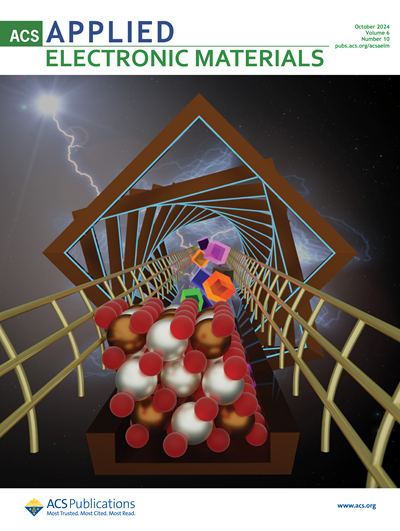Constructing Ecological Networks Based on Ecosystem Services and Network Analysis in Chongqing, China
IF 4.3
3区 材料科学
Q1 ENGINEERING, ELECTRICAL & ELECTRONIC
引用次数: 0
Abstract
Ecological networks in mountainous regions are vital for enhancing ecosystem functionality and ensuring regional ecological stability, alleviating the contradiction between land use and ecological development in rapid urbanization. However, the complexity of mountains and the need to establish a connection between ecosystem services and human well-being present significant challenges in constructing ecological networks. This study proposes an idea that identifies and derives an optimal scenario for ecological networks, integrating insights from ecosystem services and network analysis. The aim of the ecological network is to improve and protect the ecosystem’s stability while better guiding sustainable development in mountainous regions’ urban and rural areas. This study uses qualitative evaluation methods and a graph theory model to obtain the ecological network’s sources and links. The results indicate that (1) 58 important ecological source areas were identified, with a total area of 5746 km2, mainly covered by woodland and water bodies. (2) An optimal and feasible scenario comprising 5 horizontal and 14 longitudinal corridors was established. Corridors rely primarily on the river system and mountains. (3) A total of 5 key ecological function areas and some ecological zones in important urban development areas were identified. Control measures for these ecological lands were proposed to enhance the effectiveness of ecosystem service construction. It can be concluded that identifying and deriving an optimal scenario of ecological networks in mountainous regions from the perspectives of ecosystem services and network analysis is feasible.基于生态系统服务和网络分析构建中国重庆的生态网络
山区生态网络对于增强生态系统功能、确保区域生态稳定、缓解快速城市化进程中土地利用与生态发展之间的矛盾至关重要。然而,山区的复杂性以及在生态系统服务与人类福祉之间建立联系的必要性,给生态网络的构建带来了巨大挑战。本研究结合生态系统服务和网络分析的观点,提出了一种识别和推导生态网络最佳方案的思路。生态网络的目的是改善和保护生态系统的稳定性,同时更好地指导山区城乡的可持续发展。本研究采用定性评价方法和图论模型来获取生态网络的来源和联系。结果表明:(1)确定了 58 个重要生态源区,总面积达 5746 平方公里,主要为林地和水体。(2) 确定了由 5 条横向走廊和 14 条纵向走廊组成的最佳可行方案。走廊主要依靠河流系统和山脉。(3) 共确定了 5 个重点生态功能区和一些重要城市发展区的生态区。提出了这些生态用地的控制措施,以提高生态系统服务建设的有效性。可以认为,从生态系统服务和网络分析的角度识别和推导山区生态网络的最佳方案是可行的。
本文章由计算机程序翻译,如有差异,请以英文原文为准。
求助全文
约1分钟内获得全文
求助全文
来源期刊

ACS Applied Electronic Materials
Multiple-
CiteScore
7.20
自引率
4.30%
发文量
567
期刊介绍:
ACS Applied Electronic Materials is an interdisciplinary journal publishing original research covering all aspects of electronic materials. The journal is devoted to reports of new and original experimental and theoretical research of an applied nature that integrate knowledge in the areas of materials science, engineering, optics, physics, and chemistry into important applications of electronic materials. Sample research topics that span the journal's scope are inorganic, organic, ionic and polymeric materials with properties that include conducting, semiconducting, superconducting, insulating, dielectric, magnetic, optoelectronic, piezoelectric, ferroelectric and thermoelectric.
Indexed/Abstracted:
Web of Science SCIE
Scopus
CAS
INSPEC
Portico
 求助内容:
求助内容: 应助结果提醒方式:
应助结果提醒方式:


